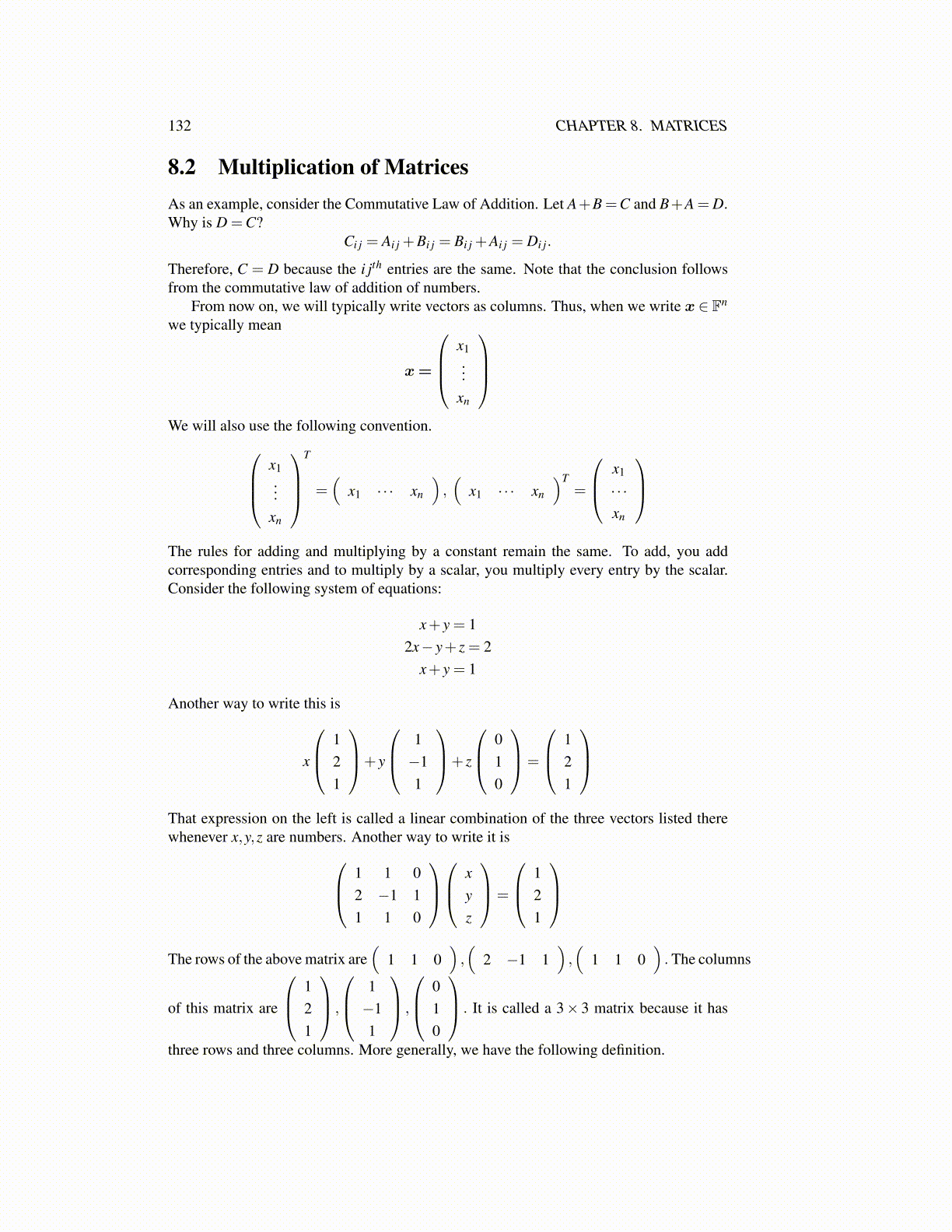
132 CHAPTER 8. MATRICES
8.2 Multiplication of MatricesAs an example, consider the Commutative Law of Addition. Let A+B =C and B+A = D.Why is D =C?
Ci j = Ai j +Bi j = Bi j +Ai j = Di j.
Therefore, C = D because the i jth entries are the same. Note that the conclusion followsfrom the commutative law of addition of numbers.
From now on, we will typically write vectors as columns. Thus, when we write x ∈ Fn
we typically mean
x=
x1...
xn
We will also use the following convention.
x1...
xn
T
=(
x1 · · · xn
),(
x1 · · · xn
)T=
x1
· · ·xn
The rules for adding and multiplying by a constant remain the same. To add, you addcorresponding entries and to multiply by a scalar, you multiply every entry by the scalar.Consider the following system of equations:
x+ y = 12x− y+ z = 2
x+ y = 1
Another way to write this is
x
121
+ y
1−11
+ z
010
=
121
That expression on the left is called a linear combination of the three vectors listed therewhenever x,y,z are numbers. Another way to write it is 1 1 0
2 −1 11 1 0
x
yz
=
121
The rows of the above matrix are
(1 1 0
),(
2 −1 1),(
1 1 0). The columns
of this matrix are
121
,
1−11
,
010
. It is called a 3× 3 matrix because it has
three rows and three columns. More generally, we have the following definition.